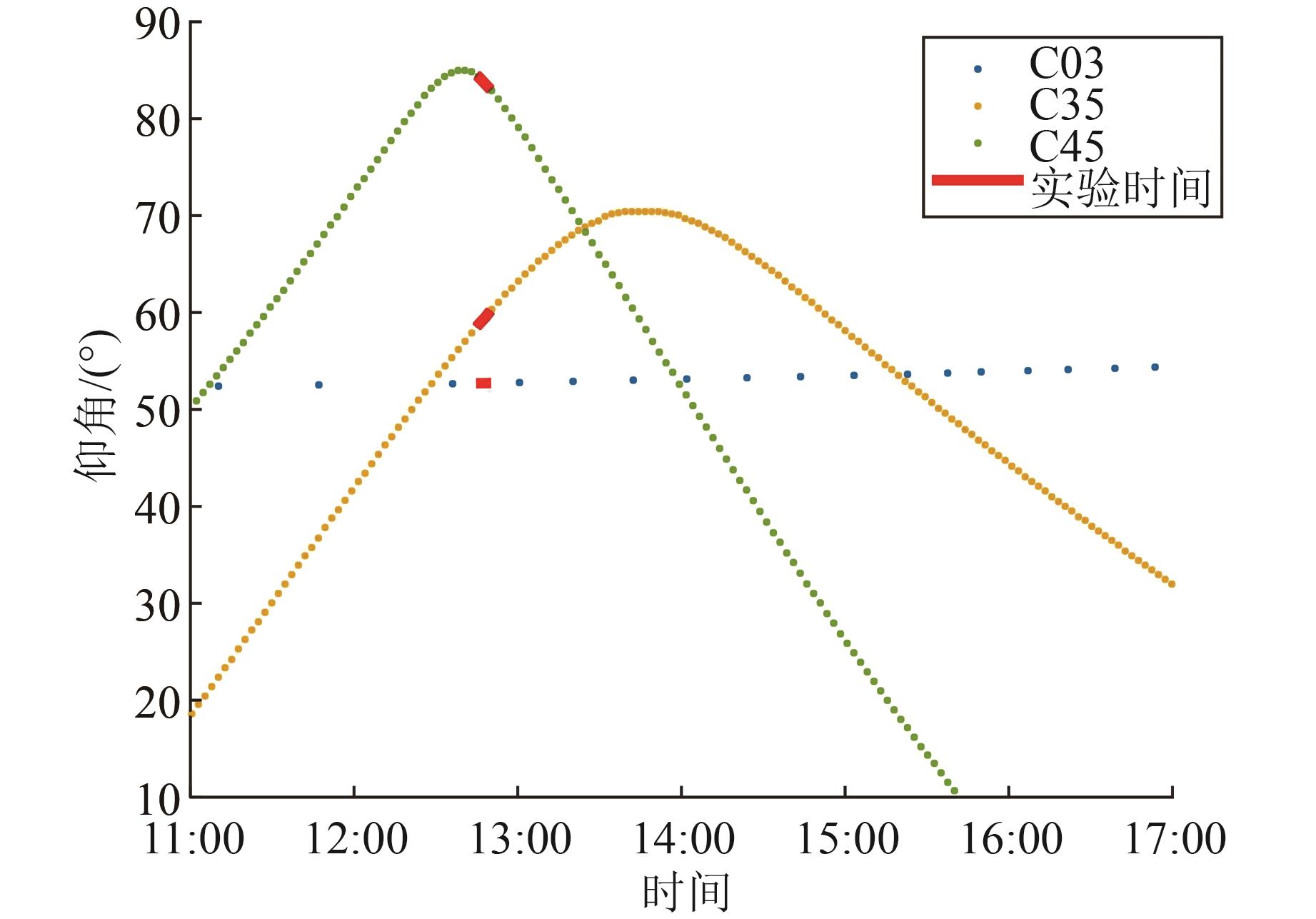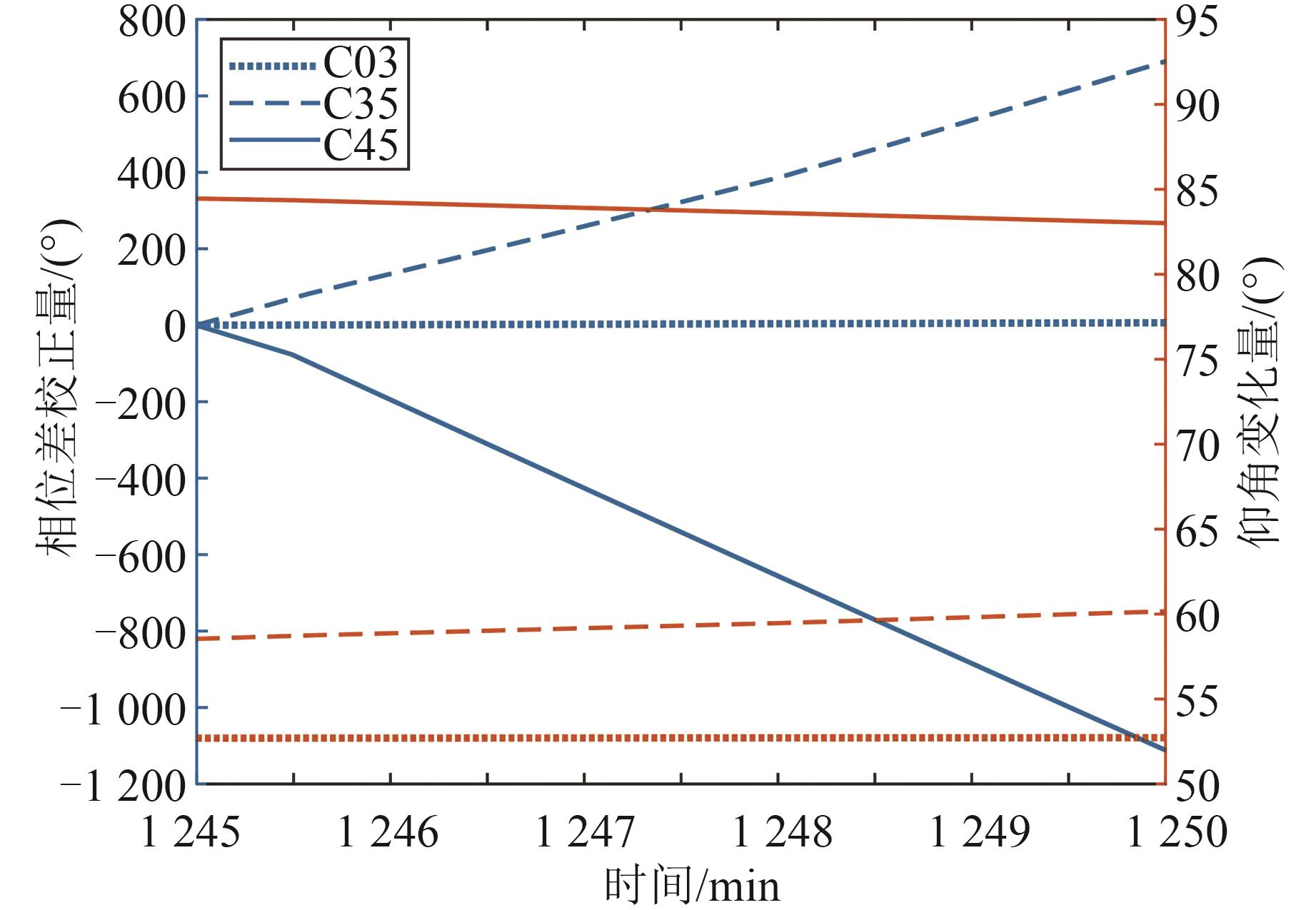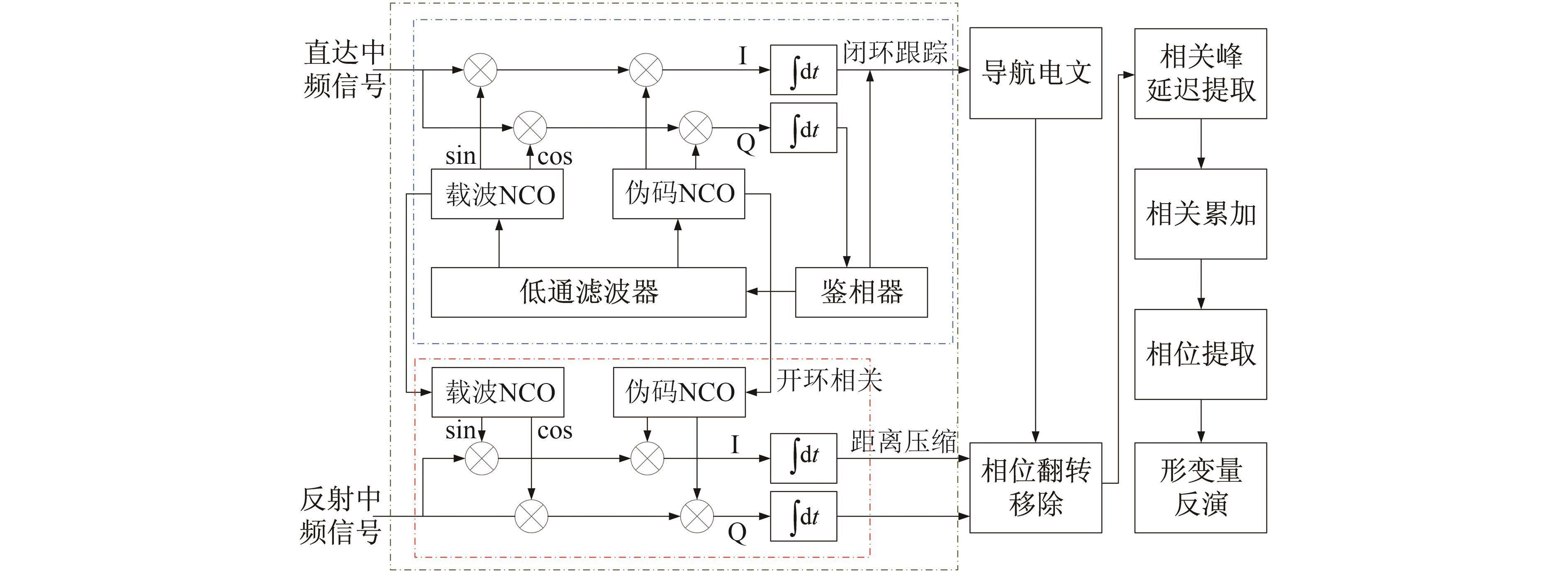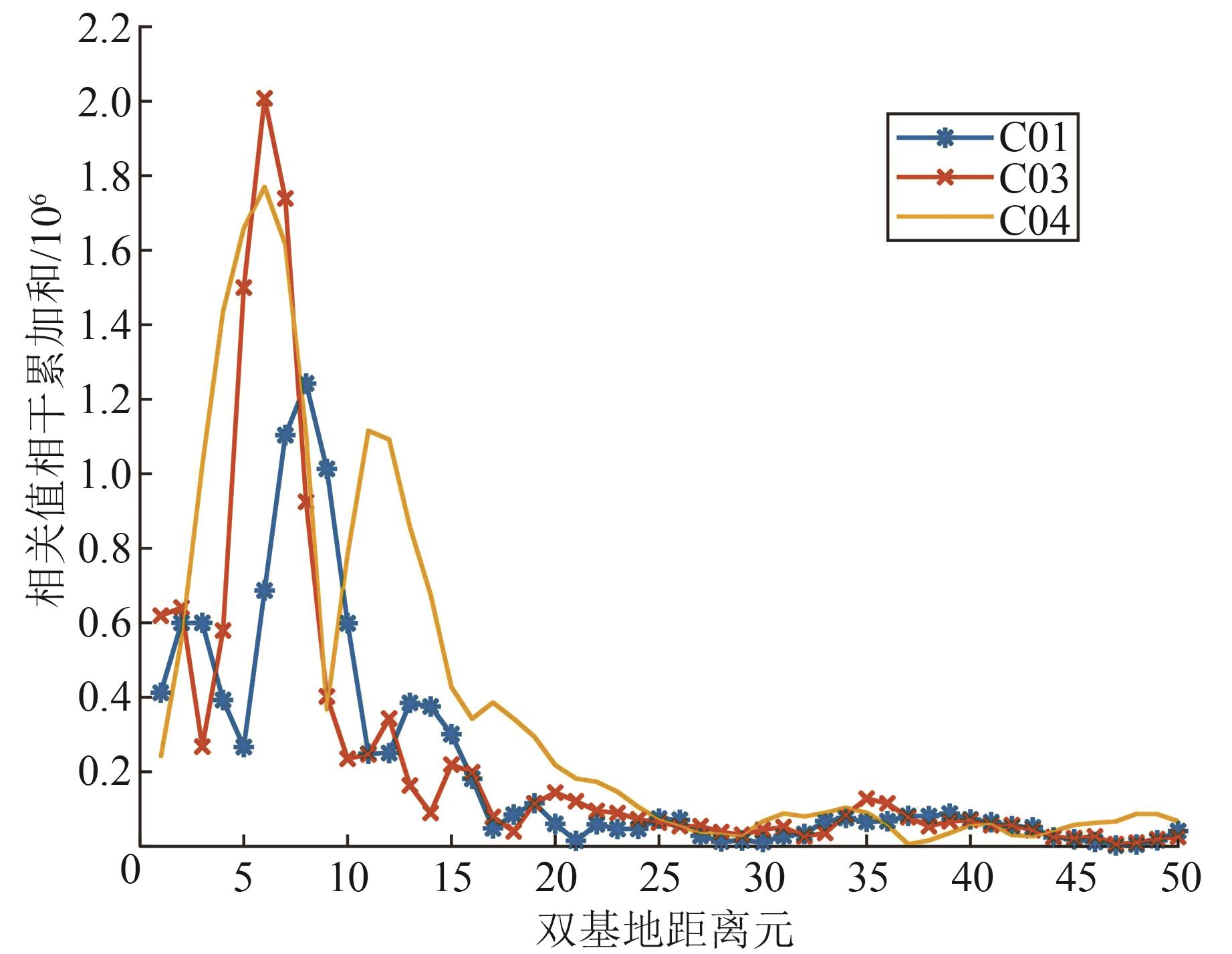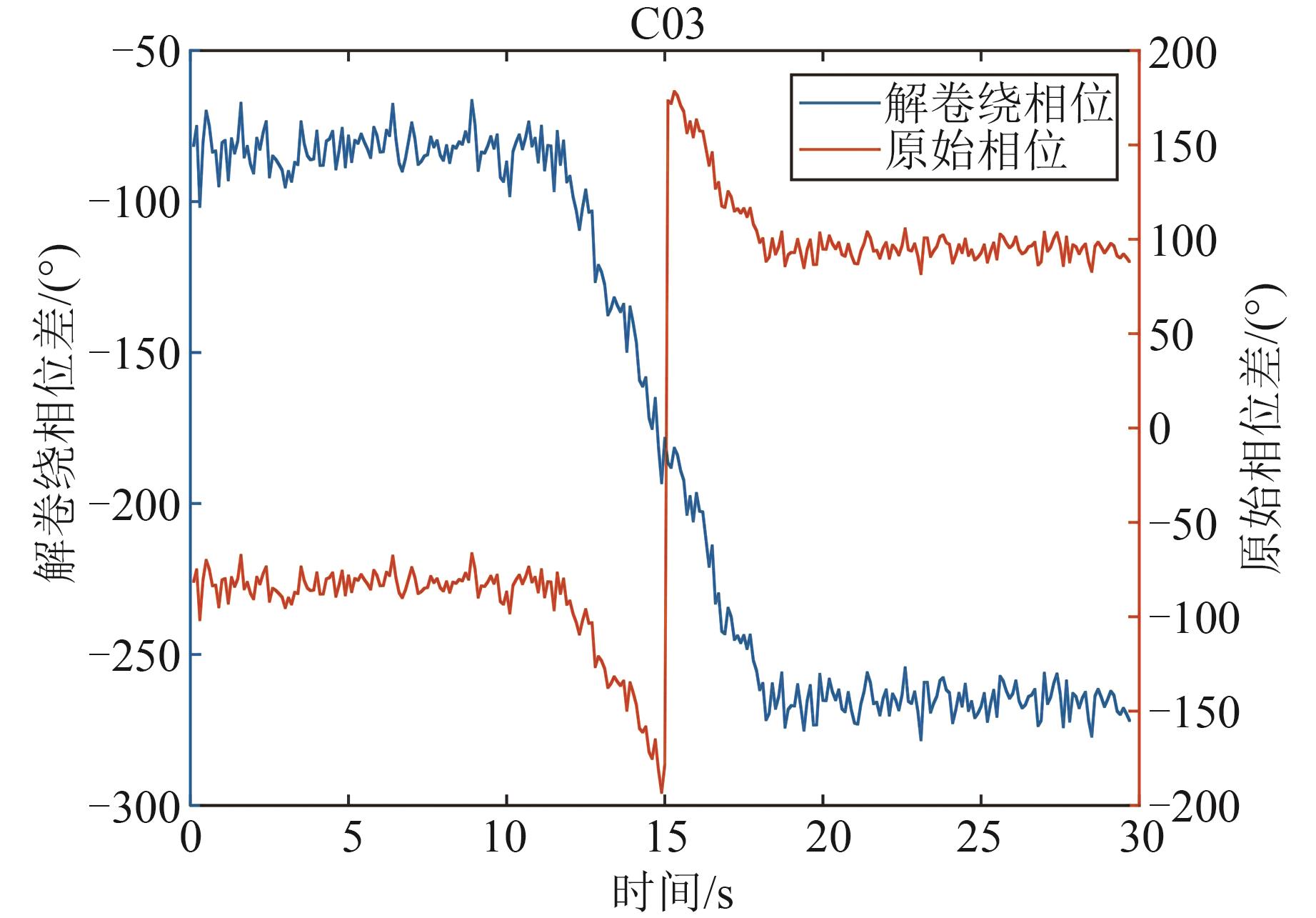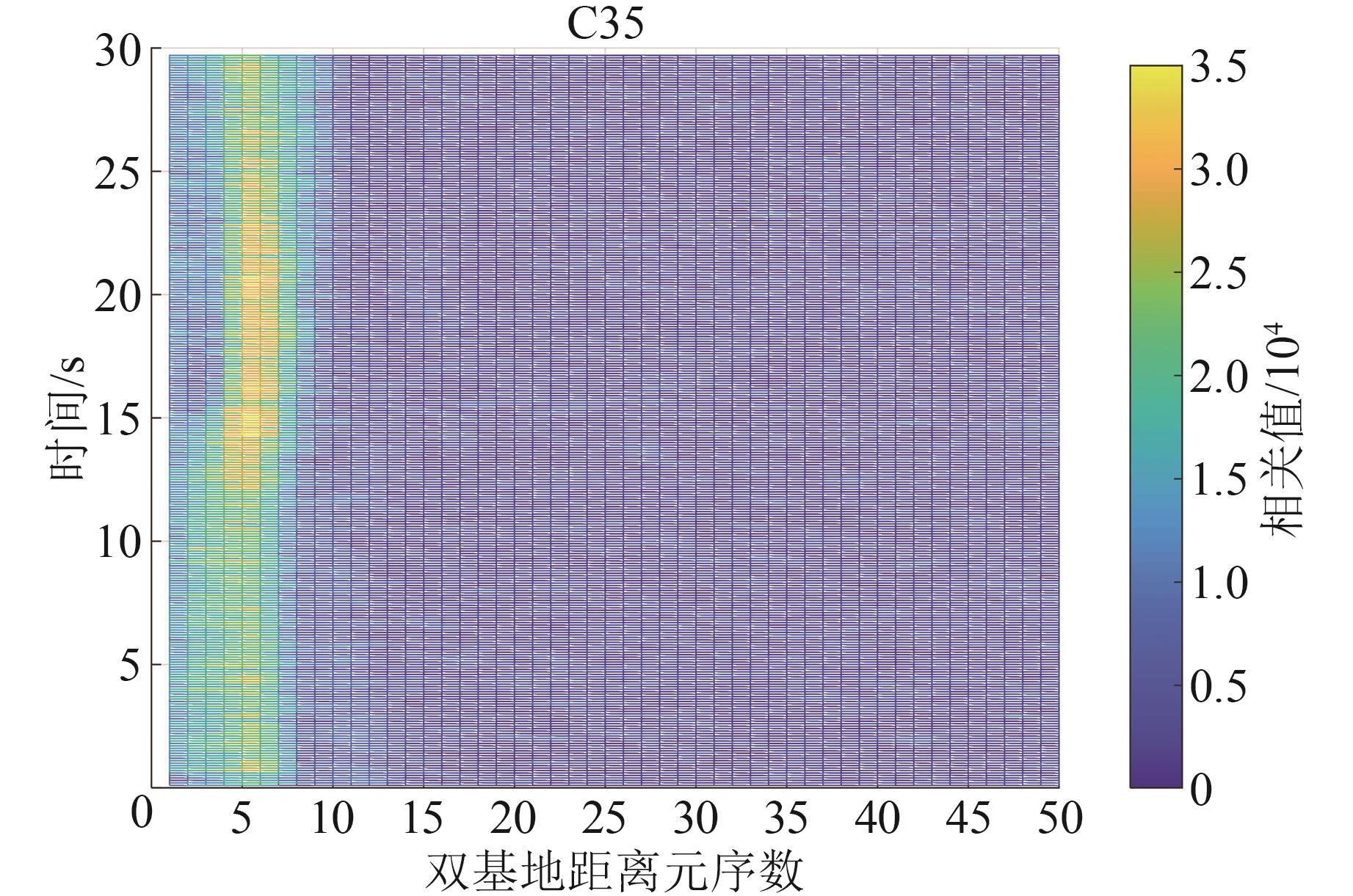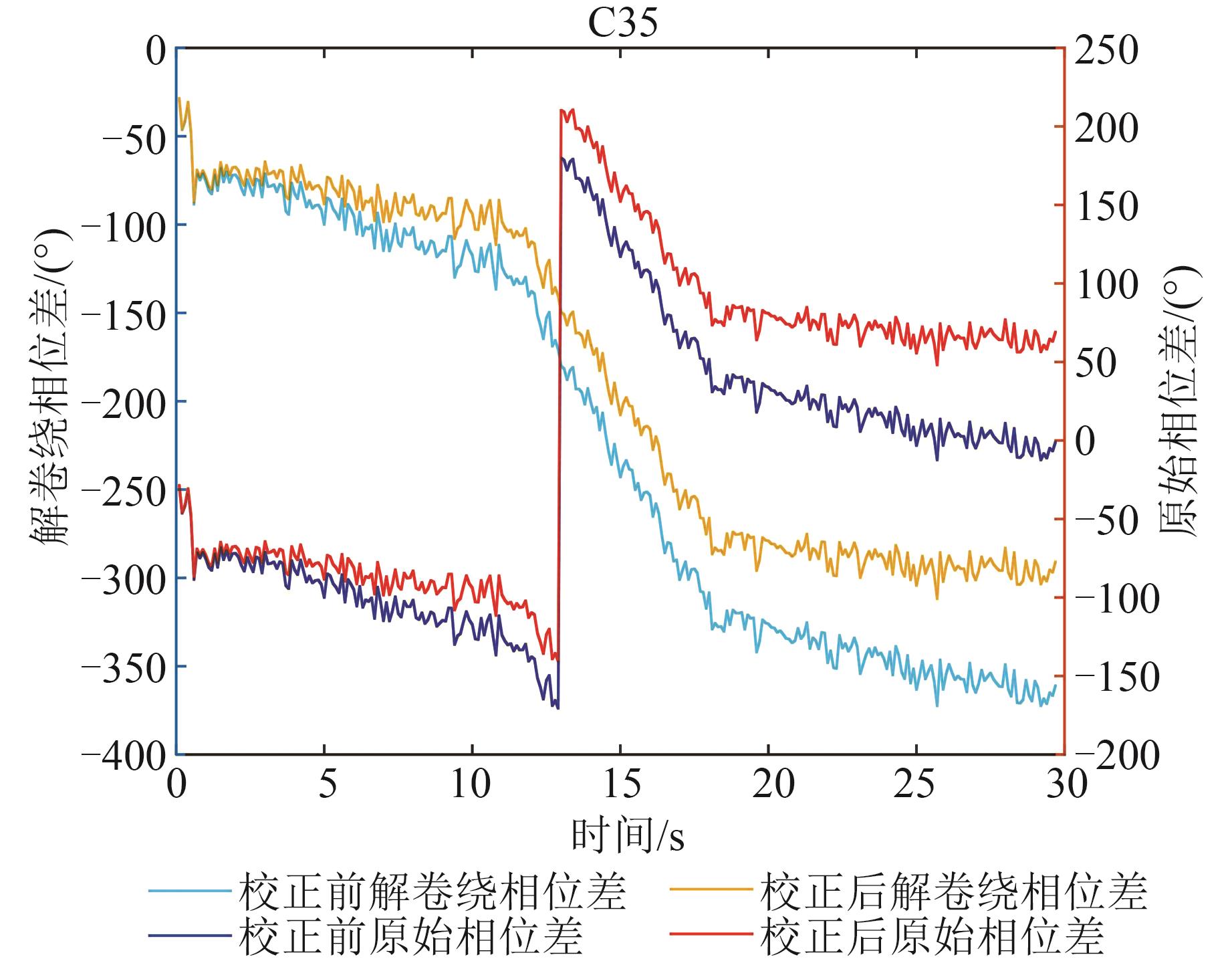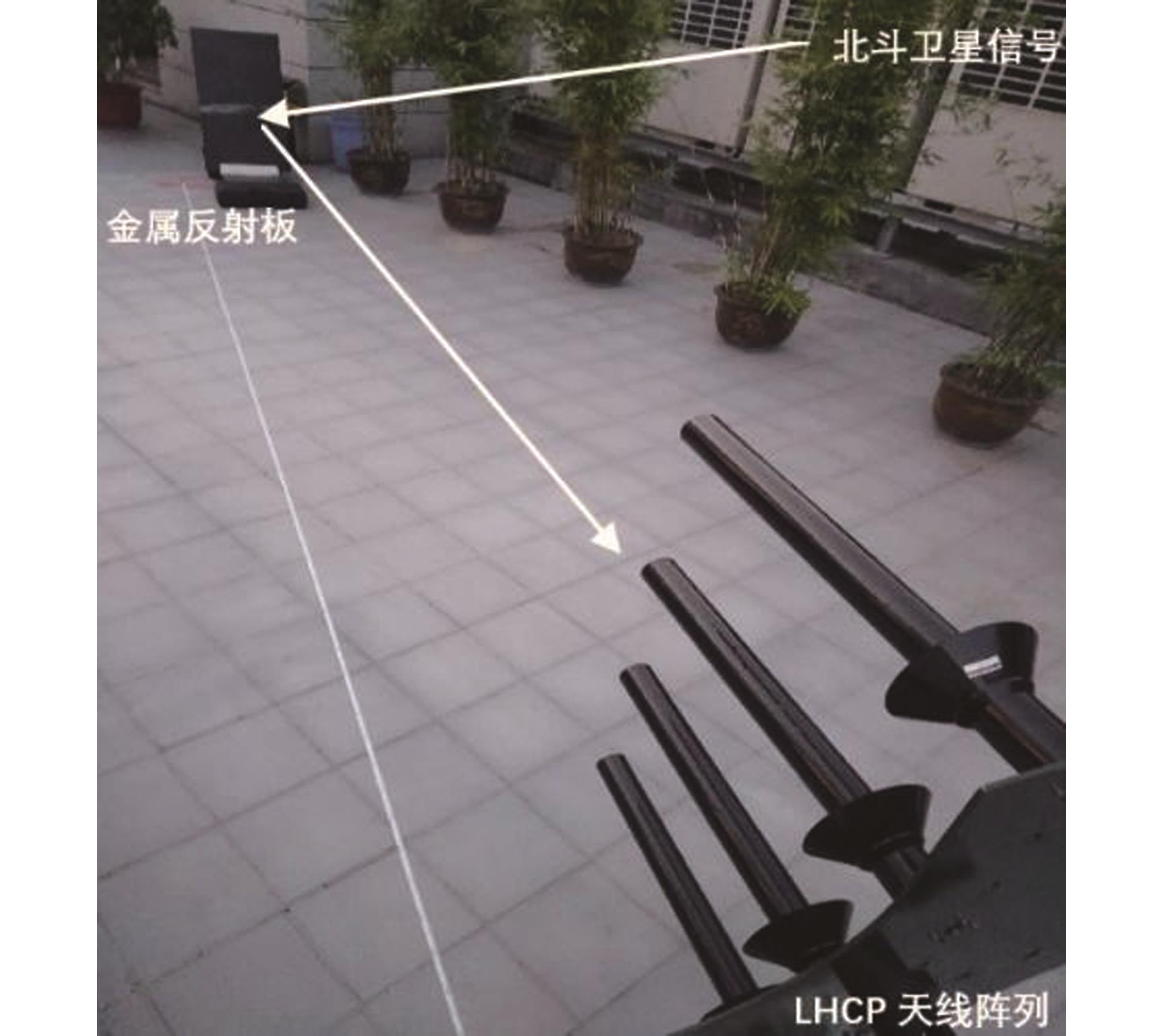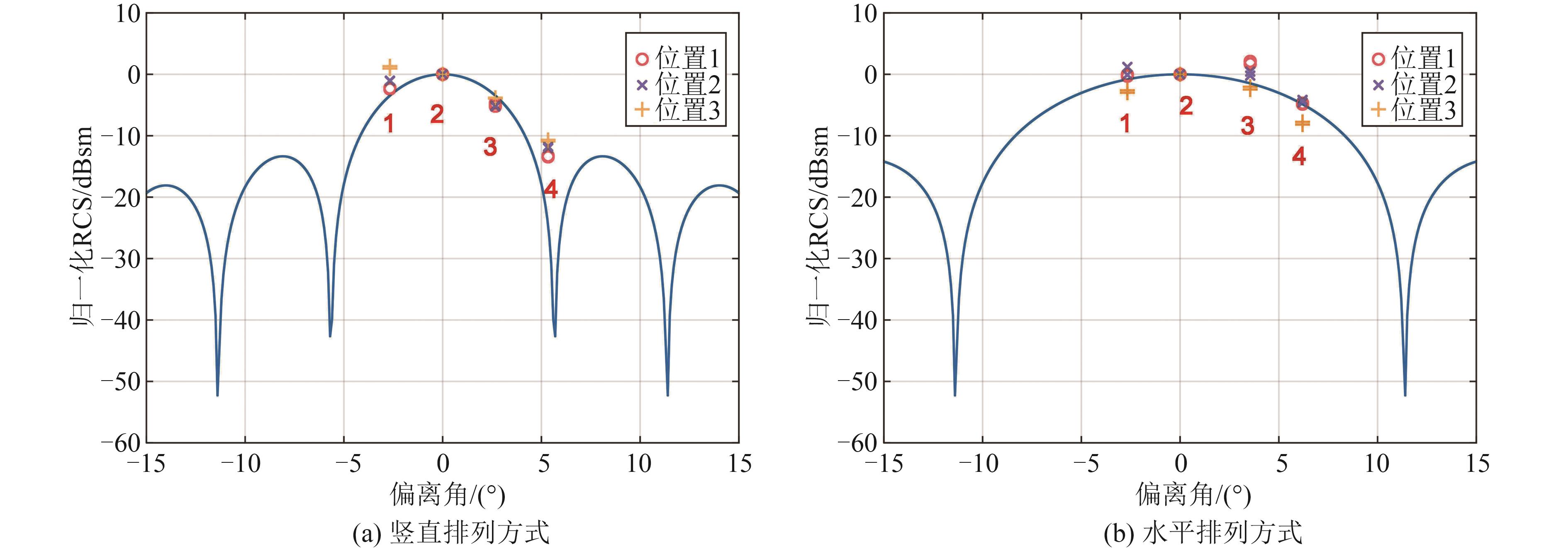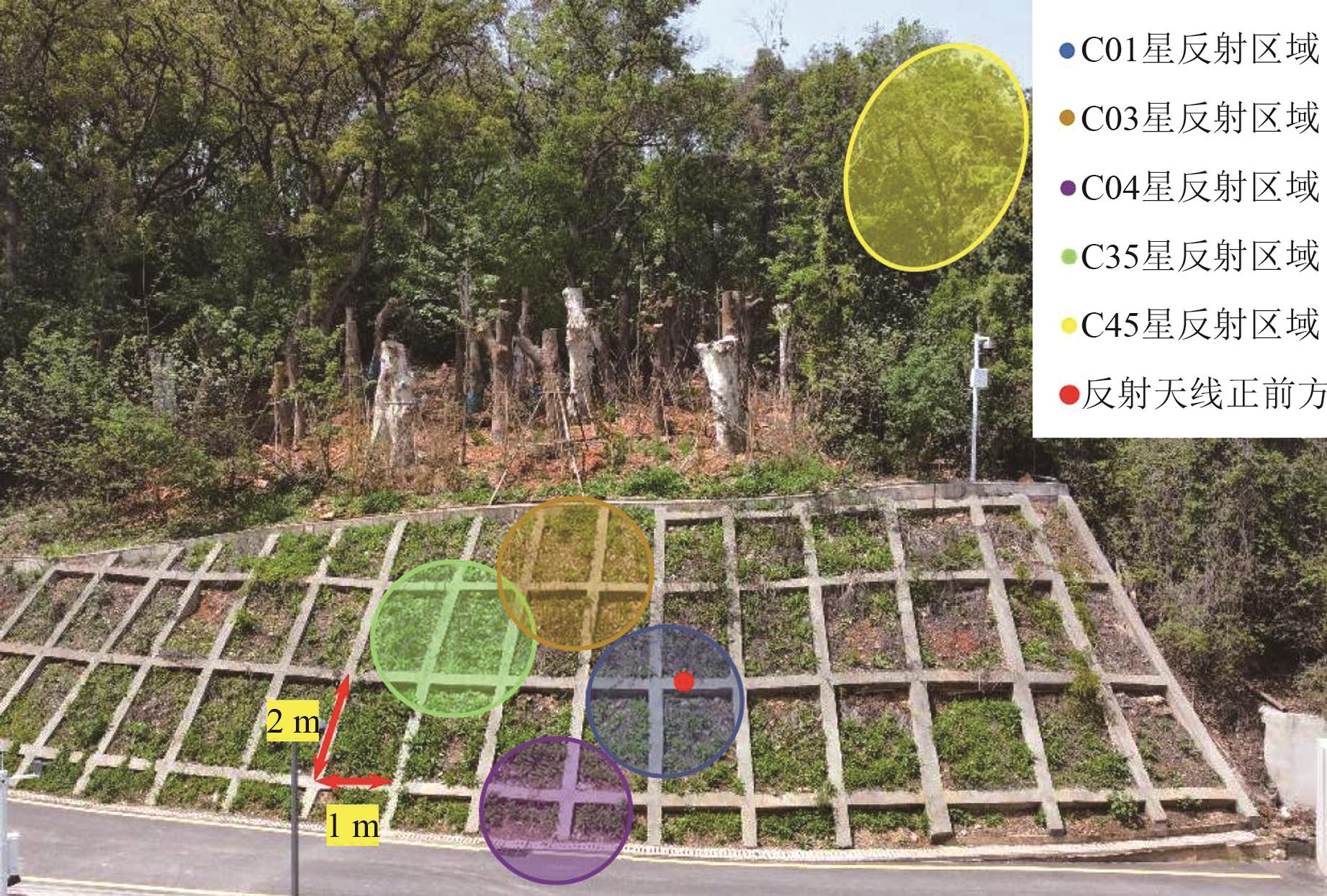Road Slope Deformation Monitoring Experiment and Error Analysis by Ground Based GNSS-R Method
-
摘要:
目前,使用全球卫星导航系统反射测量技术进行形变监测存在未进行真实坡面实验、未分析卫星运动影响和未探究接收天线位置偏移对形变监测结果的影响等问题。针对实际公路边坡进行形变监测,分析了卫星运动和反射信号接收天线位置偏移两种因素对形变反演精度的影响,提出一种同时适用于中圆地球轨道(medium earth orbit,MEO)卫星运动和倾斜地球同步轨道(inclined geosynchronous orbit, IGSO)卫星微小位置偏差的校正方法。接收天线位置偏移情况下的形变监测实验结果表明,通过运动卫星校正,利用MEO卫星对28.0 cm和11.7 cm位移的形变反演误差分别低至1.97 cm和0.56 cm,相较于校正前误差分别减小3.03 cm和2.70 cm;通过接收天线位置偏移实验,得出当天线位置偏移镜面反射线分别处于垂直方向约±6
和水平方向约±5 范围内时,不会对形变估测与反演结果造成大的影响。 -
关键词:
- 全球卫星导航系统反射测量技术 /
- 形变反演 /
- 相位误差补偿 /
- 北斗系统
Abstract:ObjectivesUsing global navigation satellite system reflectometry (GNSS-R) method to monitor road slope deformation has the advantages of large area and high efficiency. At present, there are three problems to be solved in the research based on this method. First, the errors caused by satellite motion need to be corrected. Second, it is necessary to evaluate the influence of antenna position of reflection signal on the accuracy of deformation inversion. Third, it is necessary to carry out experiments on actual road slopes.
MethodsBy analyzing the phase difference between reflected GNSS signal and direct GNSS signal from road slope, deformation inversion of real slope is carried out. The effects of GNSS satellite movement and the position migration of the reflected signal receiving antenna on the accuracy of deformation inversion are analyzed. A correction method is proposed which can be applied to both medium earth orbit (MEO) and inclined geosynchronous orbit (IGSO) satellite motion and geostationary orbit satellite micro-position deviation. A method to calculate the maximum acceptable antenna position offset based on the reflecting surface area is presented.
ResultsThe results show that the inversion errors of MEO satellite for 28.0 cm and 11.7 cm position offsets are 1.97 cm and 0.56 cm respectively, which are reduced by 3.03 cm and 2.70 cm compared to before correction. Through the experiment of receiving antenna position offset, it is concluded that the deformation estimation and inversion results will not be affected when the antenna position is within about ±6° and ±5° in the center direction of the main lobe migration in the long side and the short side directions of a rectangular reflector respectively.
ConclusionsThe accuracy of deformation inversion will not be affected when the position deviation of the reflector antenna is within the acceptable range that can be calculated. All these will provide reference for the future application of GNSS-R deformation monitoring technology.
-
Keywords:
- GNSS-reflectometry /
- deformation inversion /
- phase error compensation /
- BeiDou system
-
http://ch.whu.edu.cn/cn/article/doi/10.13203/j.whugis20220802
-
表 1 GEO星距离反演结果/cm
Table 1 Range Inversion Results of GEO Satellites/cm
卫星序号 真实形变量 原始反演形变 校正后形变量 形变校正量 最终误差 C01 28.0 26.63 26.63 0 -1.37 C03 26.65 26.62 -0.03 -1.38 C04 27.22 27.24 +0.02 -0.76 C01 11.7 12.65 12.65 0 0.95 C03 11.97 11.95 -0.03 0.25 C04 11.74 11.76 +0.02 0.06 表 2 C35运动卫星相位补偿及形变反演结果/cm
Table 2 Deformation Inversion Results of Moving Satellite C35/cm
实际推动量 校正前反演距离 校正后反演距离 形变校正量 误差 28.0 33.00 29.97 -3.03 1.97 11.7 14.96 12.26 -2.70 0.56 表 3 两次子实验的形变量反演结果
Table 3 Variable Inversion Results of Two Sub-Experiments
天线序号 竖直排列方式 水平排列方式 偏移角度/(°) 形变反演误差/cm 偏移角度/(°) 形变反演误差/cm LHCP1 2.63 0.43 2.63 0.17 LHCP2 0 0.72 0 0.44 LHCP3 3.65 0.52 2.72 0.68 LHCP4 6.29 0.58 5.36 0.52 相关系数 -0.40 0.17 表 4 C45运动卫星相位补偿及形变反演结果/cm
Table 4 Deformation Inversion Results of Moving Satellite C45/cm
实际推动量 校正前反演距离 校正后反演距离 误差 28.0 18.16 21.42 6.58 11.7 4.41 7.67 4.03 -
[1] Weng M C, Lin C H, Shiu W J, et al. Towards a Rapid Assessment of Highway Slope Disasters by Using Multidisciplinary Techniques[J]. Landslides, 2022, 19(3): 687-701.
[2] Dong K, Yang D W, Chen J K, et al. Monitoring-Data Mechanism-Driven Dynamic Evaluation Method for Slope Safety[J]. Computers and Geotechnics, 2022, 148: 104850.
[3] 荣延祥, 龚正, 陈泽权, 等. 一种由粗到精的边坡形变检测方法[J]. 测绘通报, 2021(6): 93-97. Rong Yanxiang, Gong Zheng, Chen Zequan, et al. A Coarse-to-Fine Method for Slope Deformation Detection[J]. Bulletin of Surveying and Mapping, 2021(6): 93-97.
[4] Qiu Z W, Jiao M L, Jiang T, et al. Dam Structure Deformation Monitoring by GB-InSAR Approach[J]. IEEE Access, 2020, 8: 123287-123296.
[5] 罗天文, 李斐, 潘斌, 等. 利用车载双天线InSAR系统监测公路边坡形变[J]. 武汉大学学报(信息科学版), 2023, 48(3): 359-367. Luo Tianwen, Li Fei, Pan Bin, et al. Highway Slope Deformation Monitoring Based on Vehicle-Borne Dual-Antenna InSAR System[J]. Geomatics and Information Science of Wuhan University, 2023, 48(3): 359-367.
[6] Vazquez-Ontiveros J R, Martinez-Felix C A, Vazquez-Becerra G E, et al. Monitoring of Local Deformations and Reservoir Water Level for a Gravity Type Dam Based on GPS Observations[J]. Advances in Space Research, 2022, 69(1): 319-330.
[7] 王冬伟, 孙越强, 王先毅, 等. 使用BD-3 B2a反射信号测 量水面高度[J]. 武汉大学学报(信息科学版), 2022, 47(11): 1878-1886. Wang Dongwei, Sun Yueqiang, Wang Xianyi, et al. Water Surface Altimetry Using BD-3 B2a Reflected Signal[J]. Geomatics and Information Science of Wuhan University, 2022, 47(11): 1878-1886.
[8] Wan W, Liu B, Guo Z, et al. Initial Evaluation of the First Chinese GNSS-R Mission BuFeng-1 A/B for Soil Moisture Estimation[J]. IEEE Geoscience and Remote Sensing Letters, 2022, 19: 8017305.
[9] Guo Fei, Chen Huaijie, Zhu Yifan, et al. A GNSS-IR Soil Moisture Inversion Method Integrating Phase, Amplitude and Frequency[J]. Geomatics and Information Science of Wuhan University, 2022, DOI:10.13203/j.whugis20210644. (郭斐,陈惟杰, 朱逸凡,等.一种融合相位、振幅与频率的GNSS-IR土壤湿度反演方法[J].武汉大学学报(信息科学版), 2022,DOI:10.13203/j.whugis20210644.)
[10] 杜皓, 郭文飞, 郭迟, 等. 针对GNSS-R海面风速反演的自适应CDF匹配方法[J]. 武汉大学学报(信息科学版), 2021, 46(12): 1924-1931. Du Hao, Guo Wenfei, Guo Chi, et al. Adaptively CDF Matching Method in GNSS-R Wind Speed Retrieval[J]. Geomatics and Information Science of Wuhan University, 2021, 46(12): 1924-1931.
[11] Jin S G, Wang Q S, Dardanelli G. A Review on Multi-GNSS for Earth Observation and Emerging Applications[J]. Remote Sensing, 2022, 14(16): 3930.
[12] 刘经南, 邵连军, 张训械. GNSS-R研究进展及其关键技术[J]. 武汉大学学报(信息科学版), 2007, 32(11): 955-960. Liu Jingnan, Shao Lianjun, Zhang Xunxie. Advances in GNSS-R Studies and Key Technologies[J]. Geomatics and Information Science of Wuhan University, 2007, 32(11): 955-960.
[13] 金双根, 张勤耘, 钱晓东. 全球导航卫星系统反射测量(GNSS+R)最新进展与应用前景[J]. 测绘学报, 2017, 46(10): 1389-1398. Jin Shuanggen, Zhang Qinyun, Qian Xiaodong. New Progress and Application Prospects of Global Navigation Satellite System Reflectometry (GNSS+R)[J]. Acta Geodaetica et Cartographica Sinica, 2017, 46(10): 1389-1398.
[14] 万玮, 陈秀万, 彭学峰, 等. GNSS遥感研究与应用进展和展望[J]. 遥感学报, 2016, 20(5): 858-874. Wan Wei, Chen Xiuwan, Peng Xuefeng, et al. Overview and Outlook of GNSS Remote Sensing Technology and Applications[J]. Journal of Remote Sensing, 2016, 20(5): 858-874.
[15] Zeng T, Zhang T, Tian W M, et al. A Novel Subsidence Monitoring Technique Based on Space-Surface Bistatic Differential Interferometry Using GNSS as Transmitters[J]. Science China Information Sciences, 2015, 58(6): 1-16.
[16] Liu F F, Fan X Z, Zhang T, et al. GNSS-Based SAR Interferometry for 3-D Deformation Retrieval: Algorithms and Feasibility Study[J]. IEEE Transactions on Geoscience and Remote Sensing, 2018, 56(10): 5736-5748.
[17] Yang Y, Zheng Y, Yu W K, et al. Deformation Monitoring Using GNSS-R Technology[J]. Advances in Space Research,2019,63(10):3303-3314.
[18] 严颂华, 唐凤雨, 陈永谦, 等. GNSS-R形变监测技术综述[J]. 无线电工程, 2021, 51(10): 1086-1092. Yan Songhua, Tang Fengyu, Chen Yongqian, et al. Review of Deformation Monitoring Based on GNSS-R Technology[J]. Radio Engineering, 2021, 51(10): 1086-1092.
[19] LiY, YanS H, MaQ S. Deformation Measurement Based on the Phase of Reflected Signals of BeiDou GEO Satellites[C]//China Satellite Navigation Conference (CSNC 2021), Singapore, 2021.
[20] Chen Y Q, Yan S H, Gong J Y. Deformation Estimation Using BeiDou GEO-Satellite-Based Reflectometry[J]. Remote Sensing, 2021, 13(16): 3285.
[21] Chen Y Q, Yan S H, Gong J Y. Phase Error Analysis and Compensation of GEO-Satellite-Based GNSS-R Deformation Retrieval[J]. IEEE Geoscience and Remote Sensing Letters, 1809, 19: 2506505.
[22] Knott E F, Shaeffer J F, Tuley M T. Radar Cross Section[M]. Raleigh: SciTech Publishing Inc., 2004.
[23] 张楠, 严颂华, 王文伟. 北斗GEO卫星微动条件下的GNSS-R土壤湿度反演[J]. 科学技术与工程, 2019, 19(9): 154-161. Zhang Nan, Yan Songhua, Wang Wenwei. Soil Moisture Inversion Based on GNSS-R Under the Micro-motion Condition of BeiDou GEO Satellites[J]. Science Technology and Engineering, 2019, 19(9): 154-161.
[24] Mahafza B R. Radar Systems Analysis and Design Using MATLAB[M]. Boca Raton: Chapman & Hall, 2005.
[25] Larson K M, Nievinski F G. GPS Snow Sensing: Results from the Earth Scope Plate Boundary Observatory[J]. GPS Solutions, 2013, 17(1): 41-52.





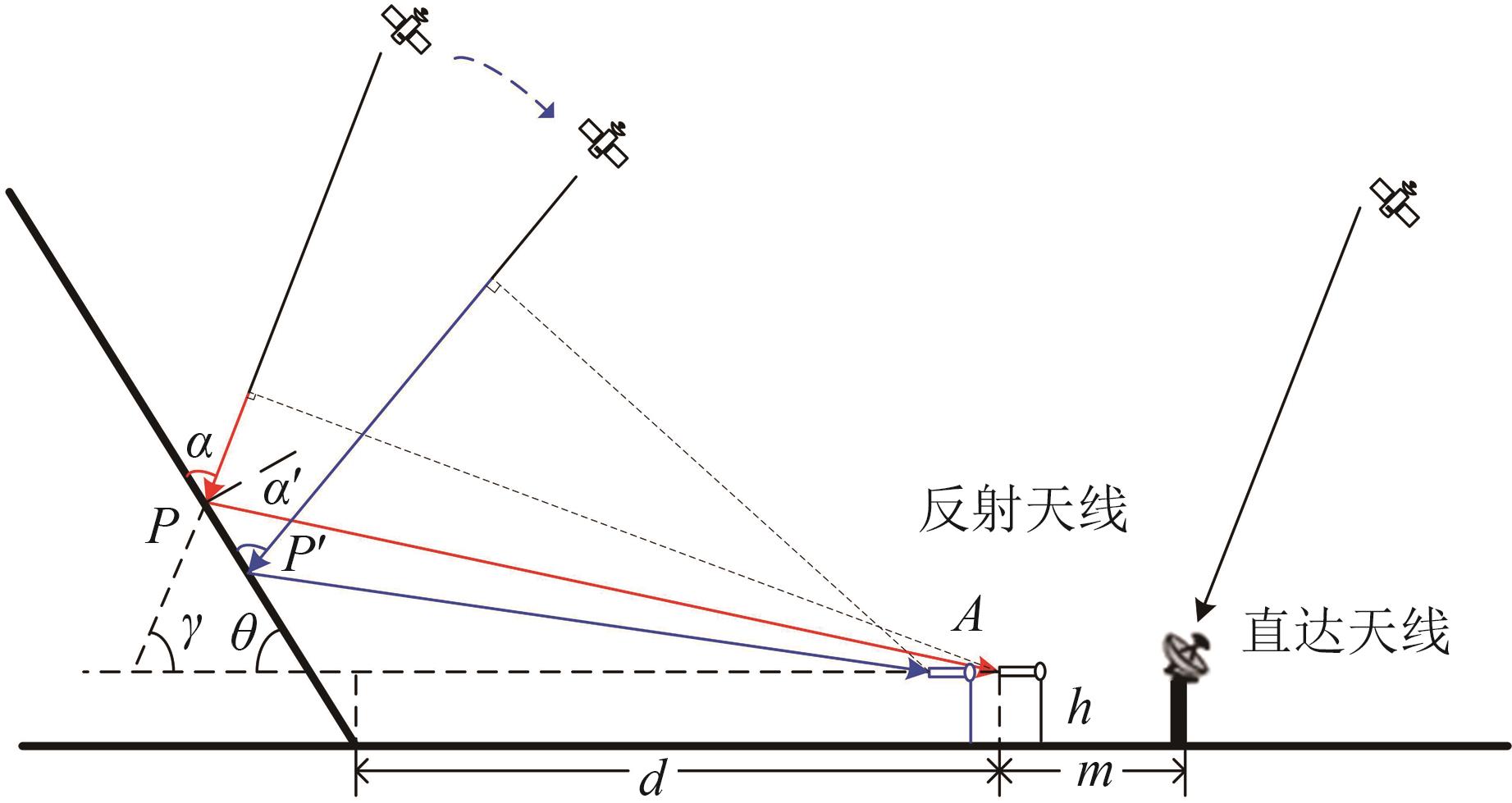
 下载:
下载:
